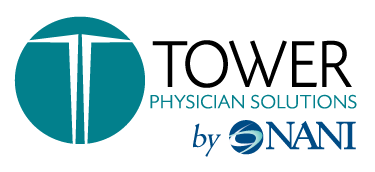Navigating the Credentialing Process: A Guide for Healthcare Professionals.

Navigating the Credentialing Process: A Guide for Healthcare Professionals
At Tower Physician Solutions, we understand that credentialing is a vital process for nephrology practices. It ensures that healthcare providers meet the necessary qualifications and standards to deliver quality care. Here are some helpful tips for effective medical practice credentialing:
1. Stay Organized
Maintain a comprehensive checklist of all required documents and credentials for each provider. This includes licenses, certifications, and proof of education. An organized system can help streamline the process and avoid delays.
2. Understand the Requirements
Different hospitals and payers have specific credentialing requirements. Familiarize yourself with these requirements to ensure that your practice is compliant and can avoid unnecessary rejections.
3. Utilize Software Solutions
Consider using credentialing software that can automate parts of the process. This can help in tracking expirations, managing re-credentialing timelines, and maintaining up-to-date records efficiently.
4. Regularly Update Information
Credentialing is not a one-time task. Regularly update your providers' credentials and information to ensure compliance with changing regulations and standards.
5. Communicate with Providers
Keep an open line of communication with your healthcare providers regarding the status of their credentialing. Inform them about any documents needed or issues that may arise during the process.
6. Designate a Credentialing Coordinator
Appoint a dedicated staff member to oversee the credentialing process. This can help ensure consistency and accountability within the practice.
7. Education and Training
Provide ongoing education and training to staff involved in the credentialing process. Staying informed about best practices and regulatory changes is essential for compliance.
8. Conduct Background Checks
Thoroughly vet each provider through background checks. This includes verification of education, training history, work experience, and any disciplinary actions.
9. Develop a Credentialing Policy
Create a comprehensive credentialing policy that outlines the procedures and criteria used for credentialing. Share this policy with all staff involved in the process to ensure understanding and adherence.
10. Review and Revise Processes
Regularly review your credentialing processes to identify areas for improvement. Feedback from providers and staff can be invaluable in enhancing efficiency.
By following these tips, nephrology practices can ensure a smooth credentialing process, ultimately leading to improved patient care and satisfaction. At Tower Physicians Solutions, we can assist with all aspects of credentialing, allowing your practice to focus on delivering quality healthcare.
Partner with Tower Physician Solutions
We understand how tedious and time-consuming credentialing is for you. By partnering with Tower PS, you can eliminate mistakes, improve cash flow, and optimize your RCM processes with our provider credentialing services. Visit https://towerps.com/

